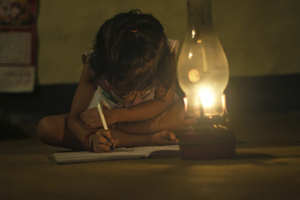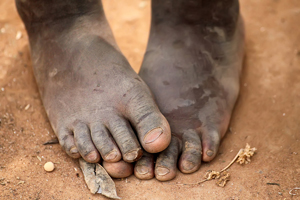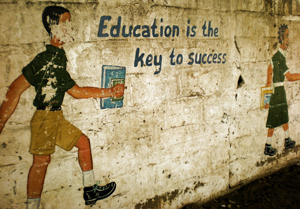|
Profiles > Philanthropy > Oxfam America
|
| Oxfam America |
 Oxfam America is a global organization working to right the wrongs of poverty, hunger, and injustice. As one of the 17 members of the international Oxfam confederation, Oxfam America works with people in more than 90 countries to create lasting solutions. Oxfam saves lives, develops long-term solutions to poverty, and campaigns for social change.In 1942, a group of Quaker intellectuals, social activists, and Oxford academics formed the Oxford Committee for Famine Relief in response to the plight of refugees in Greece. After the war, Oxfam (a name derived from its postal code abbreviation) continued its work, sending materials and financial aid to groups to aid poor people throughout Europe. As the situation in Europe improved, Oxfam's attention shifted to the needs of people in developing countries.
A group of volunteers founded Oxfam America in 1970 in response to the humanitarian crisis created by the fight for independence in Bangladesh. Oxfam (Great Britain) provided a loan for the group, and at first Oxfam America funneled funds exclusively through Oxfam (Great Britain). Originally located in Washington D.C., Oxfam America relocated to Boston in 1973, where its small staff worked out of a borrowed room in a West Newton church basement.
The next few years were pivotal, as several key supporters made prophetic and significant decisions that defined Oxfam's mission and principles, which are as follows: Oxfam America is a global organization working to right the wrongs of poverty, hunger, and injustice. As one of the 17 members of the international Oxfam confederation, Oxfam America works with people in more than 90 countries to create lasting solutions. Oxfam saves lives, develops long-term solutions to poverty, and campaigns for social change.In 1942, a group of Quaker intellectuals, social activists, and Oxford academics formed the Oxford Committee for Famine Relief in response to the plight of refugees in Greece. After the war, Oxfam (a name derived from its postal code abbreviation) continued its work, sending materials and financial aid to groups to aid poor people throughout Europe. As the situation in Europe improved, Oxfam's attention shifted to the needs of people in developing countries.
A group of volunteers founded Oxfam America in 1970 in response to the humanitarian crisis created by the fight for independence in Bangladesh. Oxfam (Great Britain) provided a loan for the group, and at first Oxfam America funneled funds exclusively through Oxfam (Great Britain). Originally located in Washington D.C., Oxfam America relocated to Boston in 1973, where its small staff worked out of a borrowed room in a West Newton church basement.
The next few years were pivotal, as several key supporters made prophetic and significant decisions that defined Oxfam's mission and principles, which are as follows:
- Oxfam America decided not to accept US government grants and to instead try to build broad-based grassroots support that would remain independent of government foreign policy.
- Appeals for support would also avoid promoting a condescending attitude toward poor people; communications would be thought-provoking rather than emotional.
- Grants would focus on small projects that could serve as models for others.
|
| Founded |
1970 |
| Founder |
A Group of Volunteers |
| Headquarters |
Boston, MA |
| Type |
Development and Relief Services |
| Recent Year Revenue |
$65,400,000 |
| Charity Navigator |
60.29 / 70.00
(four stars) |
| BBB |
Accredited 20/20 |
| Guide Star |
Gold 7/7 |
|
To develop a US constituency and funding source, the Fast for a World Harvest campaign started in 1974 and has grown to become one of the largest anti-hunger campaigns in the US. It was an exciting and nerve-wracking time for Oxfam's few staff, board members, and volunteers, who did everything -- including selling cards and dish towels outside local department stores -- to augment the overseas budget and meet the payroll.From 1976 to 1979, Oxfam America's structure evolved to allow the agency to more clearly define and expand the roles of staff and board members. The board hired an executive director and elected a management-oriented chair, who introduced strategic, annual planning and divided functions among departments, such as overseas, fundraising, development education, and administration. It was during this time that Oxfam America became both financially and administratively independent of Oxfam Great Britain.
The crisis in Kampuchea in 1979 demonstrated the importance of Oxfam America's decision not to accept US government funds. The organization found itself in the national spotlight and realized a 10-fold increase in revenues. This led its number of staff and accompanying demands for management and systems to triple. The 1999 crisis in Kosovo and the Hurricane Mitch disaster spurred further growth.
|
| The 1980s marked the start of campaigns designed to educate the US Congress and the American people about such issues as the Khmer Rouge and "empowering" approaches to relief and development. This trend led to a stronger advocacy focus at Oxfam America, where staff members took on such issues as debt relief and fair trade. An office was opened in Washington D.C., in 1994, and the organization now invests in popular campaigning infrastructure.
In 2010, Oxfam America celebrated its 40th anniversary. While the organization today is a very different -- one that has grown and changed to address both the times and the changing needs of developing countries -- several things have remained steady: the commitment to addressing issues of injustice and poverty, and the set of core values that has driven Oxfam's work -- legacies passed down through three decades of staff and board members.
|
 |
|
|
| Americans spend more on candy each year than the US government spends on poverty-reducing foreign assistance. Even though 81% of the US population believes that America has a moral responsibility to work to reduce hunger and severe poverty in poor countries, the US federal government allocates less than 1% of its budget for foreign assistance to alleviating suffering from man-made and natural disasters and promoting economic growth in poor countries.
|
|
|
Surveys show that the Americans think the US spends as much as 30% of the federal bud¬get on foreign assistance -- more than on Social Security or Medicare. However, the reality is that just 0.7% of the US federal budget is devoted to poverty-focused foreign assistance ($23.4 billion in FY2014). Most US development aid or poverty-reducing foreign aid is not even provided directly to foreign governments.
Although development aid is a small percentage of the US federal budget, in terms of absolute dollars, the US is still the largest development aid donor across the world. In 2012, the US spent $30.55 billion on official development assistance, about 0.19% of its gross national income.
About 85% goes through US-based government contractors and NGOs. When applied efficiently, foreign assistance can actually push governments to increase accountability to both their citizens and US taxpayers, building on the vast efforts of local leaders who are transforming their nations and neighborhoods. The US government spends about $80 per taxpayer on development aid. Compare that to what Americans spend in a year per person on candy ($101), lawn care ($126), and soft drinks ($204).
|
|
Approach and Programs
|
|
| Oxfam's approach is to tackle the conditions that cause poverty in the first place, rather than the distribution of material goods. They start by asking questions and challenging assumptions. What are the root causes of poverty? What can they do to change the power dynamics that keep people poor? These questions form the four categories into which Oxfam's work falls, which are as follows:
Saving lives: Oxfam assists the poorest communities when disaster strikes, but it also works to ensure greater local resilience, and the capacity of local responders and governments to deliver disaster response. Oxfam America has supported many initiatives to save lives in cases of crisis and during natural and other man-made disasters. While it worked to help save lives and find solutions for sustainable living for Ethiopian farmers struggling with drought during 2008-2011, its current campaigns include saving lives in Sudan, which is faced with conflict between the government and rebels. Oxfam helps by providing clean water and safe sanitation, and fuel-efficient stoves and other materials.
|
 |
|
In South Sudan, which is facing acute risk of hunger following violence in December 2013 -- where more than a million people have fled home in search of safety -- Oxfam is providing food and clean water to crowded makeshift camps to prevent the outbreak of diseases. Similarly, Oxfam provides humanitarian aid to people displaced or impacted in Syria and Central Africa, and to those impacted by the typhoon in the Philippines.
Programs to overcome poverty and injustice: Oxfam invests in programs to help people assert their rights, so that they can improve their lives. Oxfam America regards poverty as an injustice. Oxfam America believes that fighting poverty and fighting injustice are inter changeable; that teaching people about human rights is pertinent to defending those rights; that learning about the laws, policies and institutions can help teach decision makers to instill thinking that value the rights of the poor; and that coming together as people can create a change.
Campaigning for social justice: Oxfam works to change the laws and practices that keep people trapped in poverty. Oxfam America has organized conferences and undertaken projects to research and organize discussions leading to policy initiatives -- to bring about social justice through empowerment, programs to ensure poverty and hunger eradication, etcetera.
|
|
|
|
Save-for-Change is Oxfam America's signature savings-led micro-finance program wherein members -- primarily women living in rural communities -- form a group that saves, lends, and pays dividends to its members. Group members elect their own leaders, set their by-laws, and decide collectively how to achieve their goals. Save-for-Change has grown to include more than 500,000 members across five countries -- Cambodia, El Salvador, Guatemala, Mali, and Senegal. In Mali alone, a seed grant from the Stromme Foundation, followed by funding from the Bill & Melinda Gates Foundation, positioned Save-for-Change as one of the largest micro-finance initiatives in Africa, in terms of the number of participants.
Public education: As part of its efforts to overcome poverty, Oxfam works to change the way people think about poverty and its causes. They believe that lasting change requires systemic change and that they must create an environment where poverty cannot persist. Oxfam encourages people to think differently about poverty and to ask questions and challenge assumptions.
|
 |
Allocation of Expenses
For every $100 received in donations, Oxfam America spends $79 directly towards emergency, development, advocacy, and public education work; $14 is invested to generate future revenue; and $7 is spent on support costs. As per the consolidated financial statements for the year ending March 31, 2013, Oxfam America reported total revenues of $65.4 mln -- $62.5 mln came from contributions, while investments, interest and other income was at $2.9 mln. Total expenses were $77.9 mln, of which program services accounted for $62.1mln. Of the total program service expenses, programs to overcome poverty and injustice accounted for $24.1 mln. Supporting services expenditureswere$16.8 mln, largely attributed to fundraising activities ($10.9mln)1.There was a deficit last year of approximately $12.5 mln with revenues at $65.4 million and expenses at $77.9 mln.
|
|
|
| How you can help? |
|
|
Each month, Oxfam Pledge Partners make a lasting difference in the fight against poverty, hunger, and injustice. There are a number of ways through which one can support Oxfam America, who, in turn, can help farmers find more efficient ways to feed their families; work with women to start small businesses; give communities the tools they need to build resilience before disasters strike; and save lives immediately during disasters -- while still supporting people's efforts to overcome poverty in the long term.
|
|
| To Donate: www.oxfamamerica.org/donate |
|
Credits
http://www.oxfamamerica.org
http://en.wikipedia.org/wiki/Oxfam#Oxfam_America
www.charitynavigator.org/index.cfm?bay=search.summary&orgid=4288
|
|
|
1 CEO compensation last year to Raymond Offenheiser was $523,000 -- that was 0.67% of expenses (or 0.80% of revenues).
|
|
 Oxfam America is a global organization working to right the wrongs of poverty, hunger, and injustice. As one of the 17 members of the international Oxfam confederation, Oxfam America works with people in more than 90 countries to create lasting solutions. Oxfam saves lives, develops long-term solutions to poverty, and campaigns for social change.In 1942, a group of Quaker intellectuals, social activists, and Oxford academics formed the Oxford Committee for Famine Relief in response to the plight of refugees in Greece. After the war, Oxfam (a name derived from its postal code abbreviation) continued its work, sending materials and financial aid to groups to aid poor people throughout Europe. As the situation in Europe improved, Oxfam's attention shifted to the needs of people in developing countries.
A group of volunteers founded Oxfam America in 1970 in response to the humanitarian crisis created by the fight for independence in Bangladesh. Oxfam (Great Britain) provided a loan for the group, and at first Oxfam America funneled funds exclusively through Oxfam (Great Britain). Originally located in Washington D.C., Oxfam America relocated to Boston in 1973, where its small staff worked out of a borrowed room in a West Newton church basement.
The next few years were pivotal, as several key supporters made prophetic and significant decisions that defined Oxfam's mission and principles, which are as follows:
Oxfam America is a global organization working to right the wrongs of poverty, hunger, and injustice. As one of the 17 members of the international Oxfam confederation, Oxfam America works with people in more than 90 countries to create lasting solutions. Oxfam saves lives, develops long-term solutions to poverty, and campaigns for social change.In 1942, a group of Quaker intellectuals, social activists, and Oxford academics formed the Oxford Committee for Famine Relief in response to the plight of refugees in Greece. After the war, Oxfam (a name derived from its postal code abbreviation) continued its work, sending materials and financial aid to groups to aid poor people throughout Europe. As the situation in Europe improved, Oxfam's attention shifted to the needs of people in developing countries.
A group of volunteers founded Oxfam America in 1970 in response to the humanitarian crisis created by the fight for independence in Bangladesh. Oxfam (Great Britain) provided a loan for the group, and at first Oxfam America funneled funds exclusively through Oxfam (Great Britain). Originally located in Washington D.C., Oxfam America relocated to Boston in 1973, where its small staff worked out of a borrowed room in a West Newton church basement.
The next few years were pivotal, as several key supporters made prophetic and significant decisions that defined Oxfam's mission and principles, which are as follows:











